50 students enter for a school javeloin throw competition. The distance (in metre) thrown are recorded below

(i) Construct a cumulative frequency table.
(ii)Calculate the median distance by using the formula for median.

To draw less than type ogive, we plot the points (0,0),(20,6),(40,17),(60,34),(80,46), (100,50) join the all these points by free hand
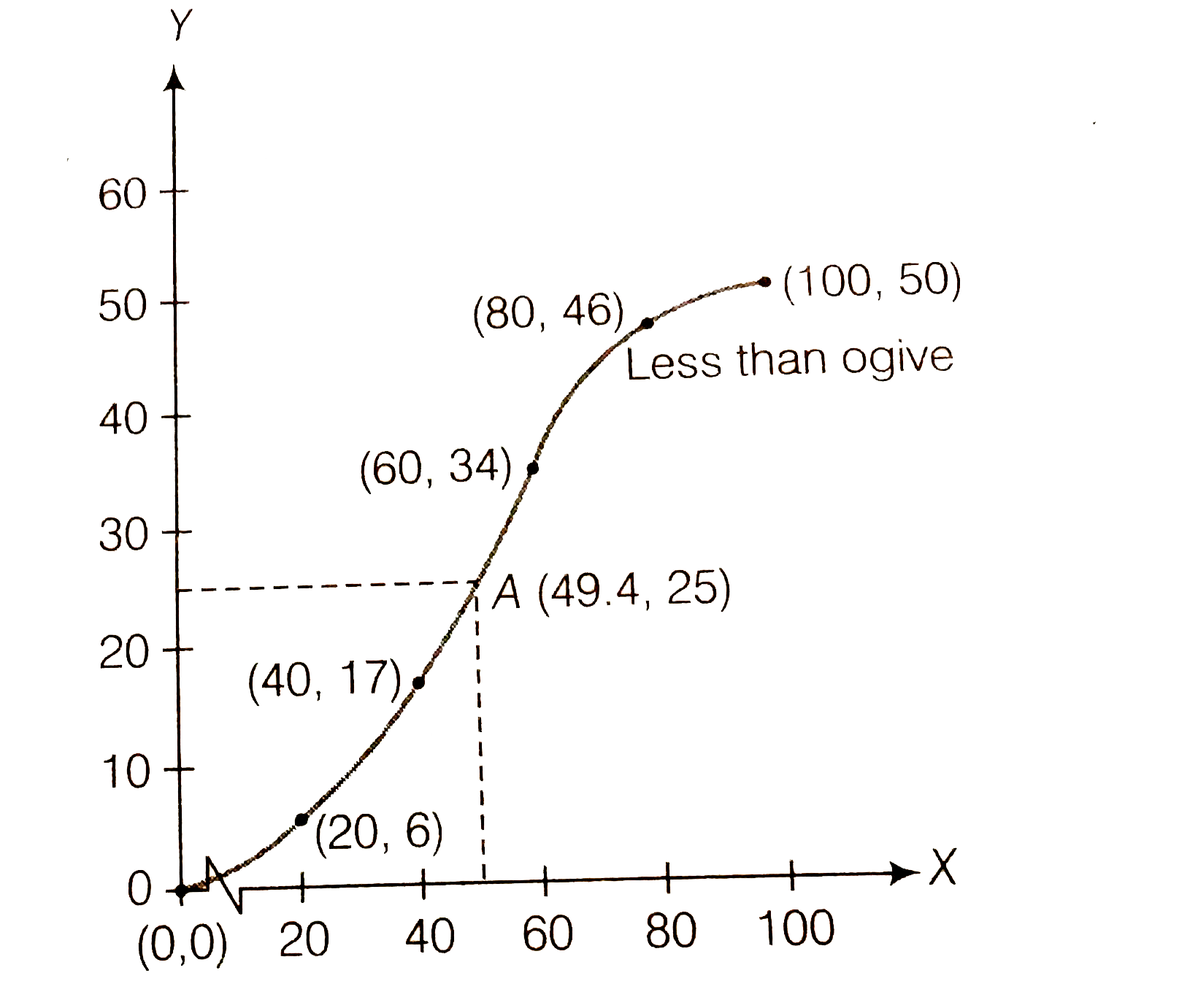
Taking Y=25cm on Y-axis and draw a line parallel to X-axis, which meets the curve at point A. From points A, we draw a line perpendicular to X-axis, where this meets that point is the required median i.e.49.4
(iii) Now, N2=502=25
Which lies is the interval 40-60 l=40, h=20, cf=17 and f=17
Median=l+(N2−cf)f×h
40+(25−17)17×20
=40+8×2017
=40+9.41
=49.41
(iv) Yes, median distane calculated by parts, (ii) and (iii) are same.
Topper's Solved these Questions
- STATISTICS AND PROBABILITYBOOK - NCERT EXEMPLARCHAPTER - STATISTICS AND PROBABILITYEXERCISE - VERY SHORT ANSWERS QUESTIONS
2 Videos
- STATISTICS AND PROBABILITYBOOK - NCERT EXEMPLARCHAPTER - STATISTICS AND PROBABILITYEXERCISE - LONG ASWERS QUESTIONS
5 Videos
- REAL NUMBERSBOOK - NCERT EXEMPLARCHAPTER - REAL NUMBERSEXERCISE - Real Numbers
39 Videos
- SURFACE AREAS AND VOLUMESBOOK - NCERT EXEMPLARCHAPTER - SURFACE AREAS AND VOLUMESEXERCISE - Surface Areas And Volumes
62 Videos
Similar Questions
Knowledge Check
Consider a block of conducting material of resistivity 'ρ' shown in the figure. Current 'I' enters at 'A' and leaves from 'D'. We apply superposition principle to find voltage ΔV developed between 'B' and 'C'. The calculation is done in the following steps:
(i) Take current 'I' entering from 'A' and assume it to spread over a hemispherical surface in the block.
(ii) Calculate field E(r) at distance 'r' from A by using Ohm's law E=ρj, where j is the current per unit area at 'r'.
(iii) From the 'r' dependence of E(r), obtain the potential V(r) at r.
(iv) Repeat (i), (ii) and (iii) for current 'I' leaving 'D' and superpose results for 'A' and 'D'.
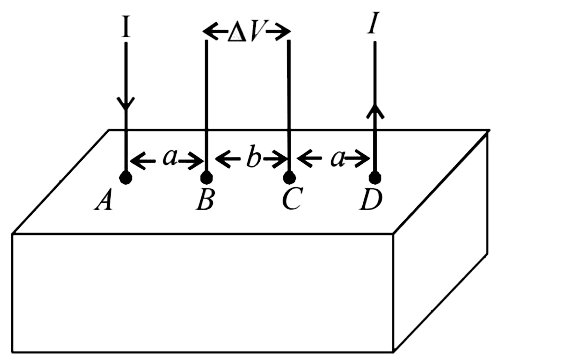
For current entering at A, the electric field at a distance 'r'AρI8πr2BρIr2CρI2πr2DρI4πr2Consider a block of conducting material of resistivity 'ρ' shown in the figure. Current 'I' enters at 'A' and leaves from 'D'. We apply superposition principle to find voltage ΔV developed between 'B' and 'C'. The calculation is done in the following steps:
(i) Take current 'I' entering from 'A' and assume it to spread over a hemispherical surface in the block.
(ii) Calculate field E(r) at distance 'r' from A by using Ohm's law E=ρj, where j is the current per unit area at 'r'.
(iii) From the 'r' dependence of E(r), obtain the potential V(r) at r.
(iv) Repeat (i), (ii) and (iii) for current 'I' leaving 'D' and superpose results for 'A' and 'D'.
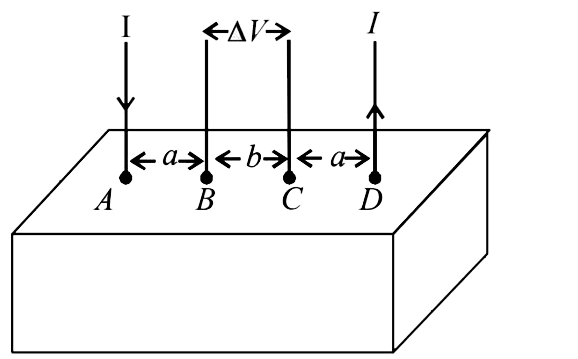
Delta V measured between B and C isAρIπa−ρIπ(a+b)BρIa−ρIa+bCρI2πa−ρI2π(a+b)DρI2π(a−b)
Recast the following cumulative table in the from of an ordinary frequency distribution and determine the value of the mode by using the formula : mode = 3 median -2 mean
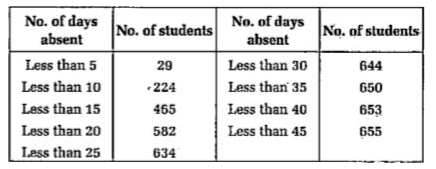
View Solutiona) A small object is placed 150 mm away from a diverging lens of focal length 100 mm.
i) Copy the figure below and draw rays to show how an image is formed by the lens.

ii) Calculate the distance of the image from the lens by using the lens formula.
b) The diverging lens in part a) is replaced by a converging lens also of focal length 100 nm. The object remains in the same position and an image is formed by the converging lens. Compare two properties of this image with those of the image formed by the diverring lens in part a)
View SolutionThe following frequency distribution table shows the distances travelled by some rickshaws in a day. Observe the table and answer the following question:
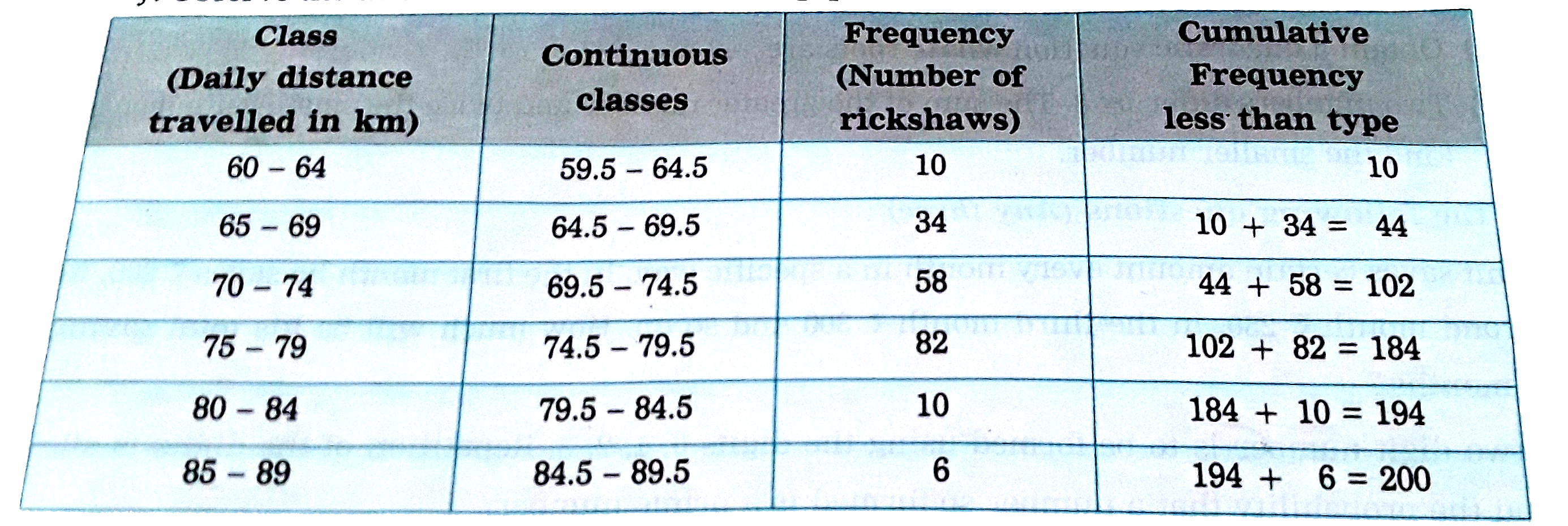
(a) which is the modal class? Why?
(b) which is the median class and why?
(c) write the cumulative frequency (c.f.) of the class preceding the median class.
(d) what is the class interval (h) to calculate median?
View SolutionWater from a tank issues into air through a horizontal nozzle and striken a fixed wall at right angles to the nozzle and 50 cm from it. If the depth of the nozzle below the free surface of water in the tank is 32 cm, calculate (i)velocity of efflux of water and (ii) the vertical distance below the nozzle of the point where the jet strikes the wall.
View SolutionA metal wire of diameter 1mm is held on two knife by a distance 50cm . The tension in the wire is 100N. The wire vibrating with its fundamental frequency and a vibrationg tuning fork together produce 5beats/s. The tension in the wire is then reduced to 81N. When the two excited , beats are heard at the same rate .
Calculate
i. the frequency of the fork and
ii. the density of material of wire
View Solution(a)State and explain Newton's second law of motion.
(b) A 1000 kg vehicle moving with a speed of 20 m/s is brought to rest in a distance of 50 metres:
(i) Find the acceleration.
(ii) Calculate the unbalanced force acting on the vehicle.
View Solution

